
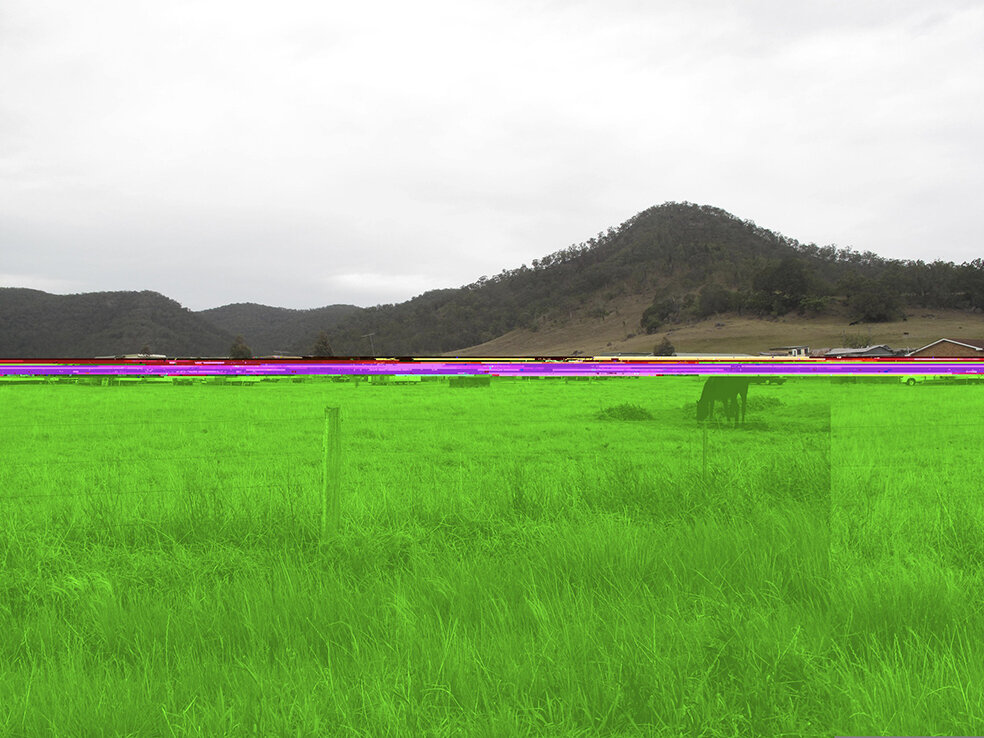
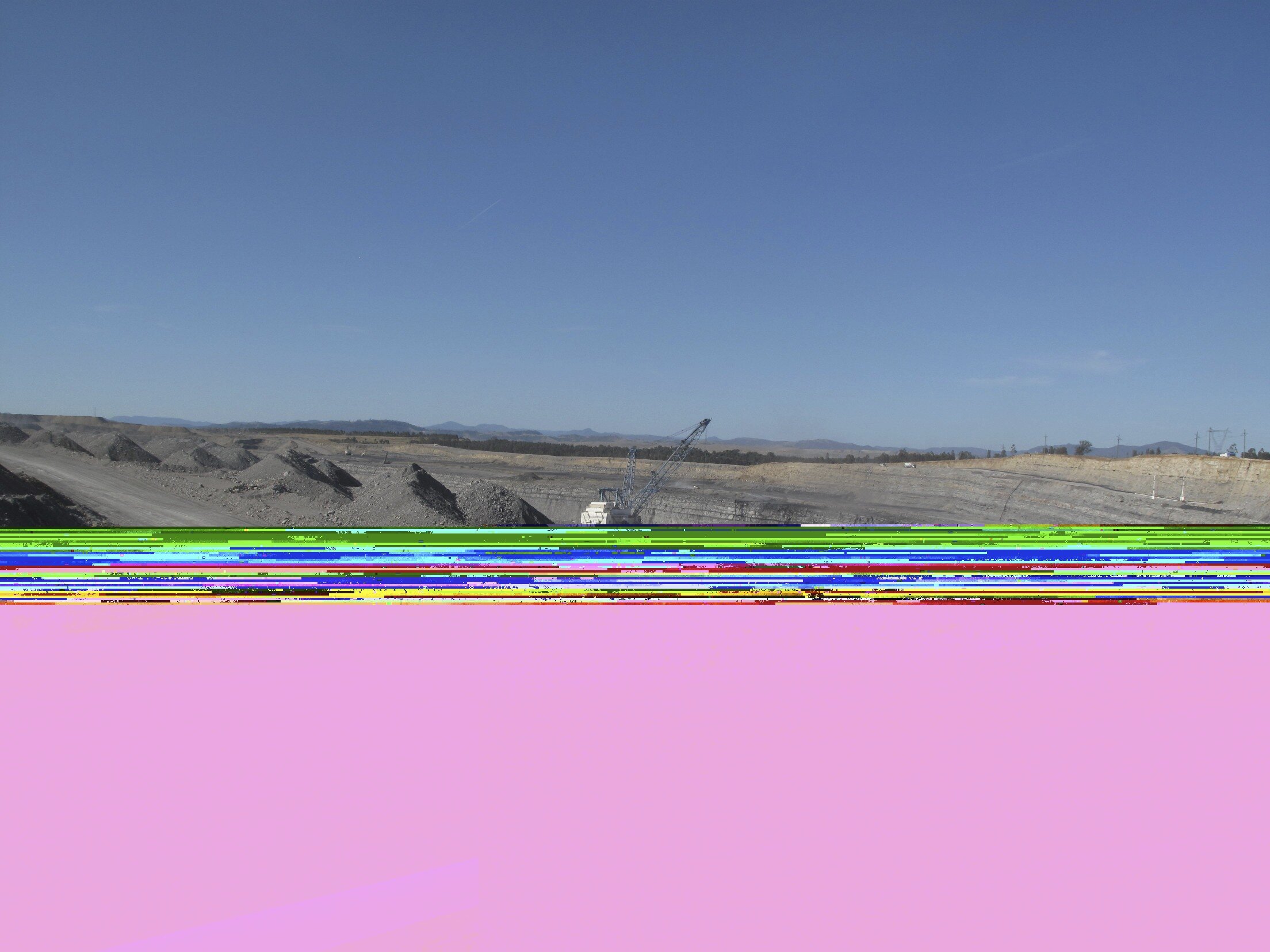
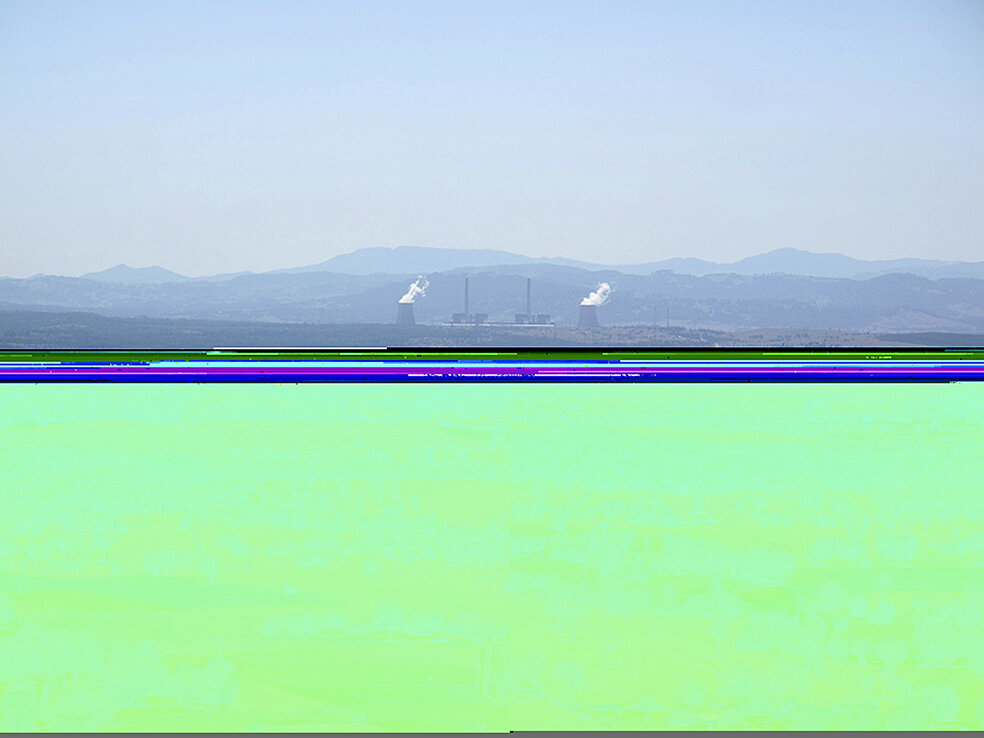
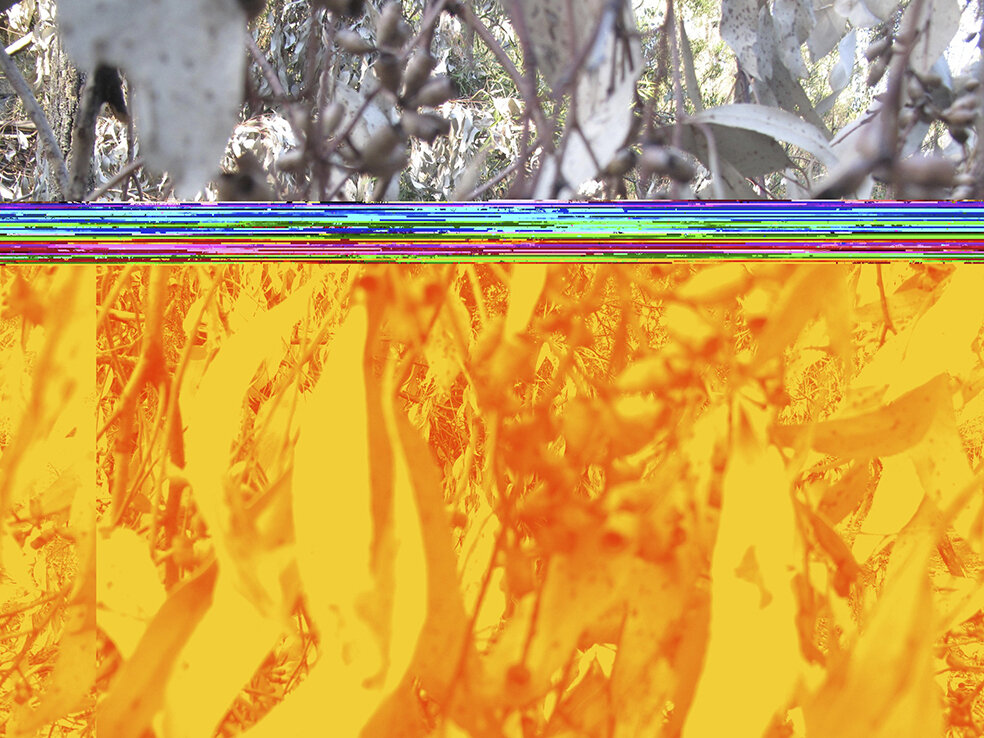
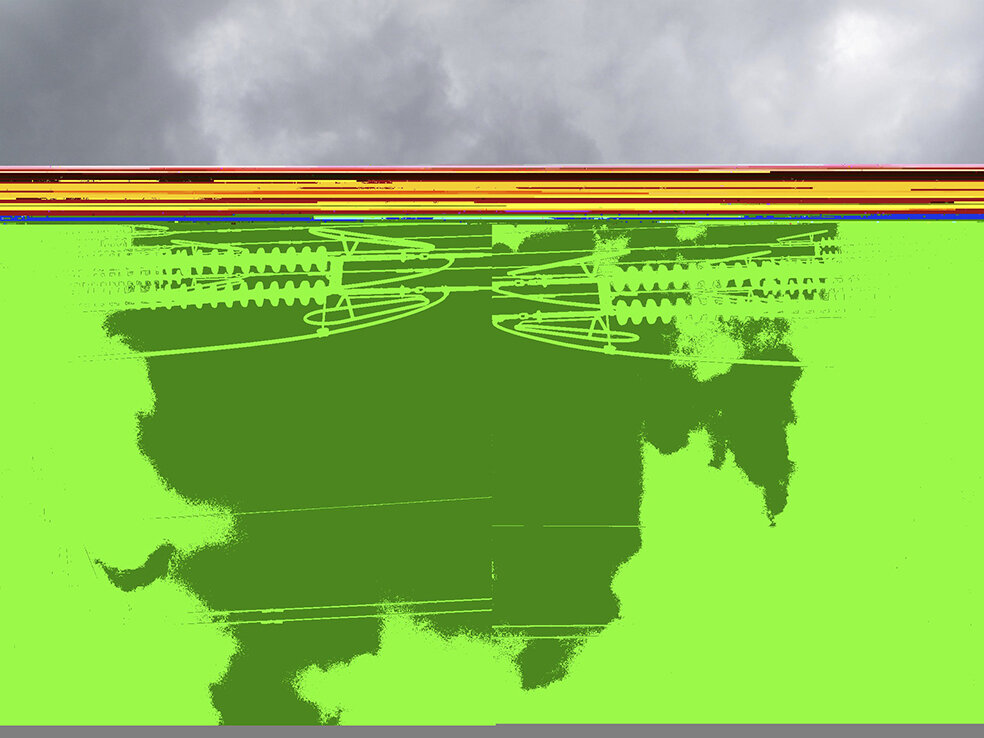

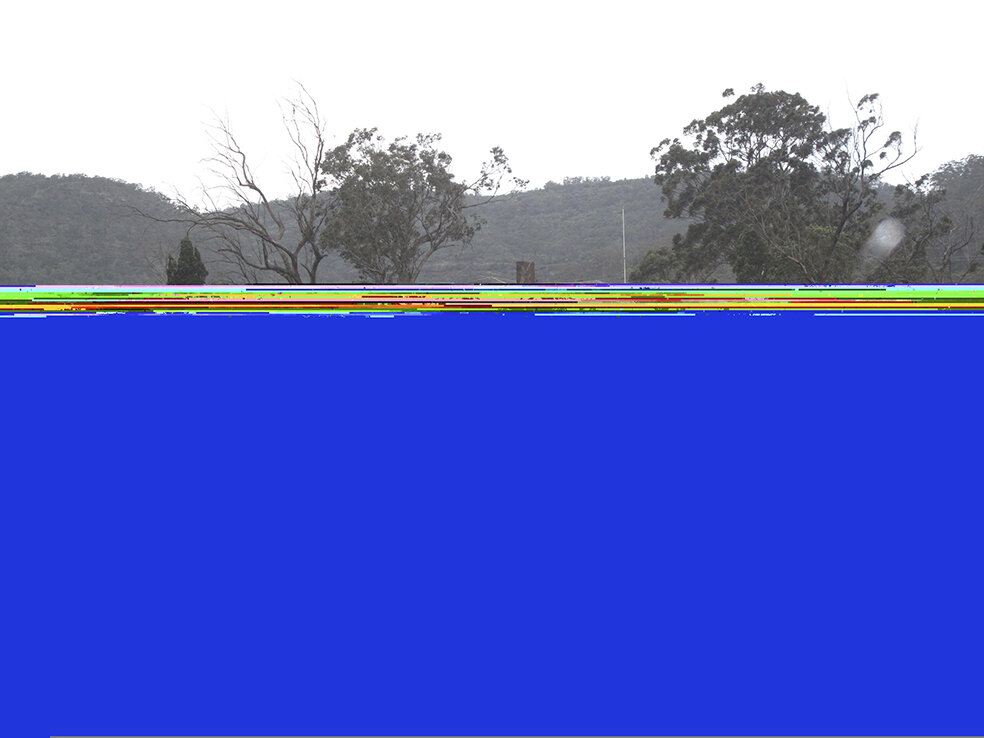
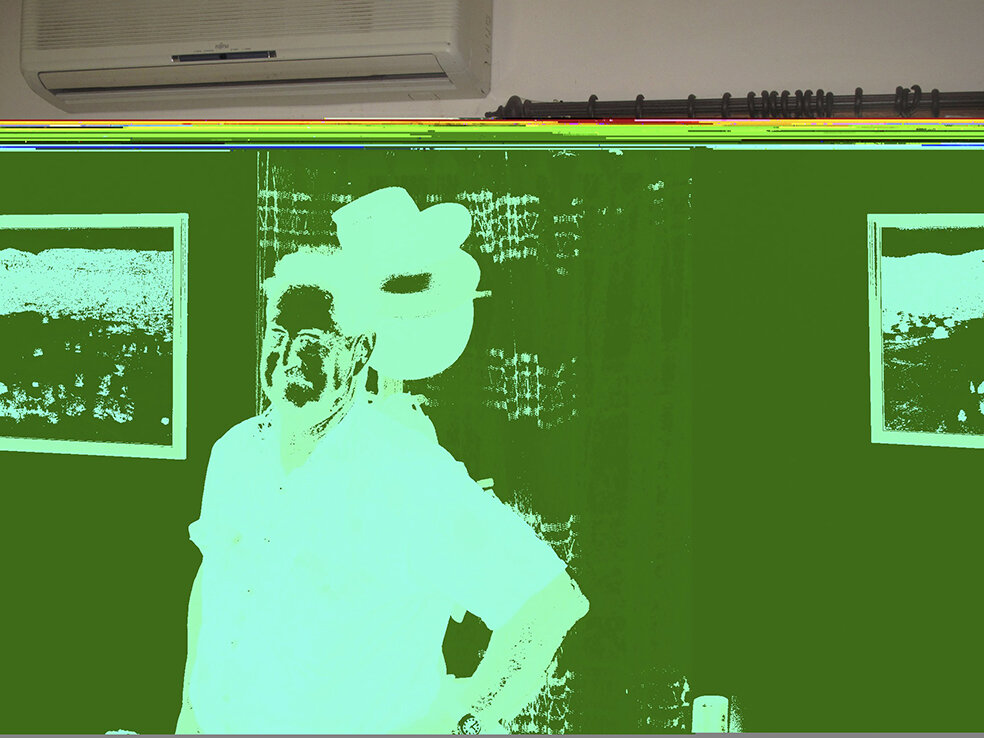

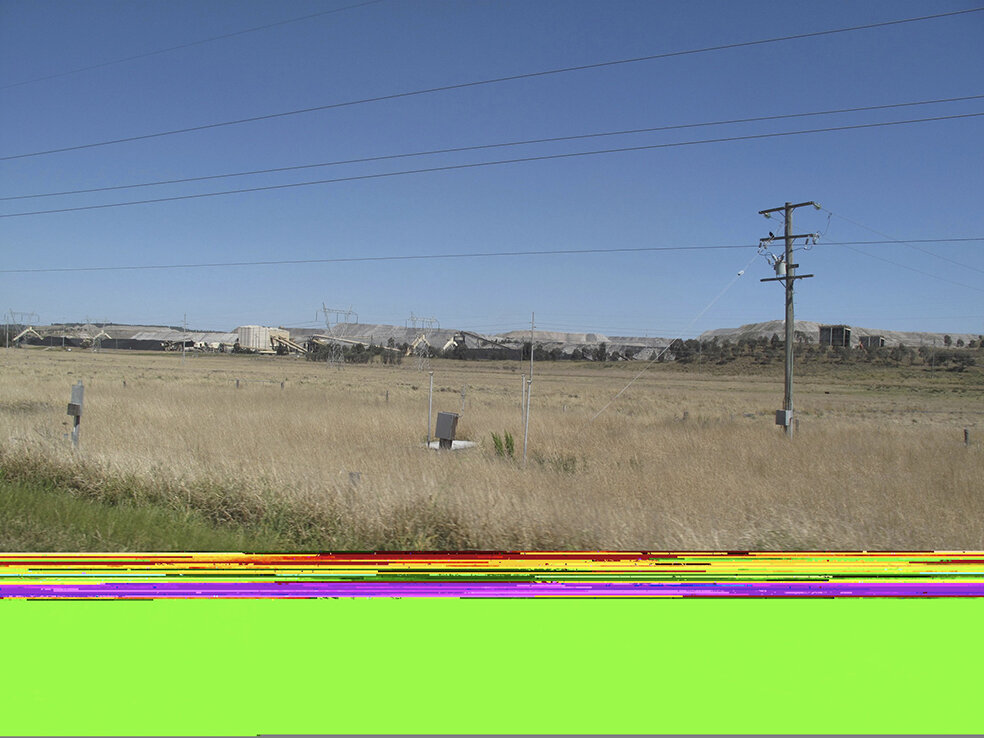
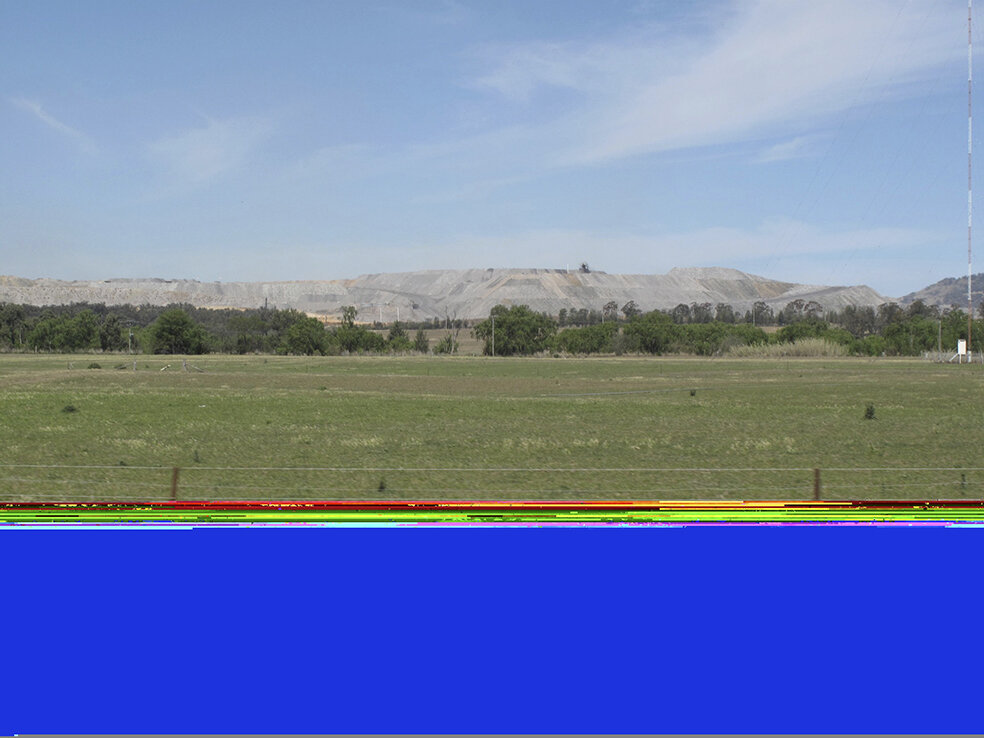
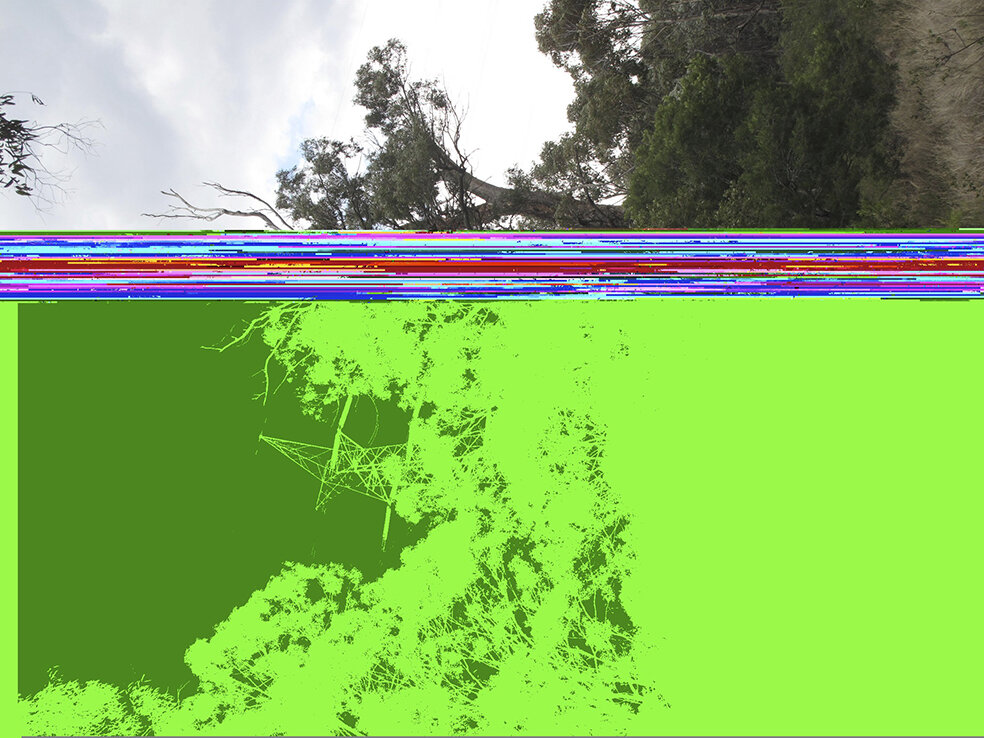
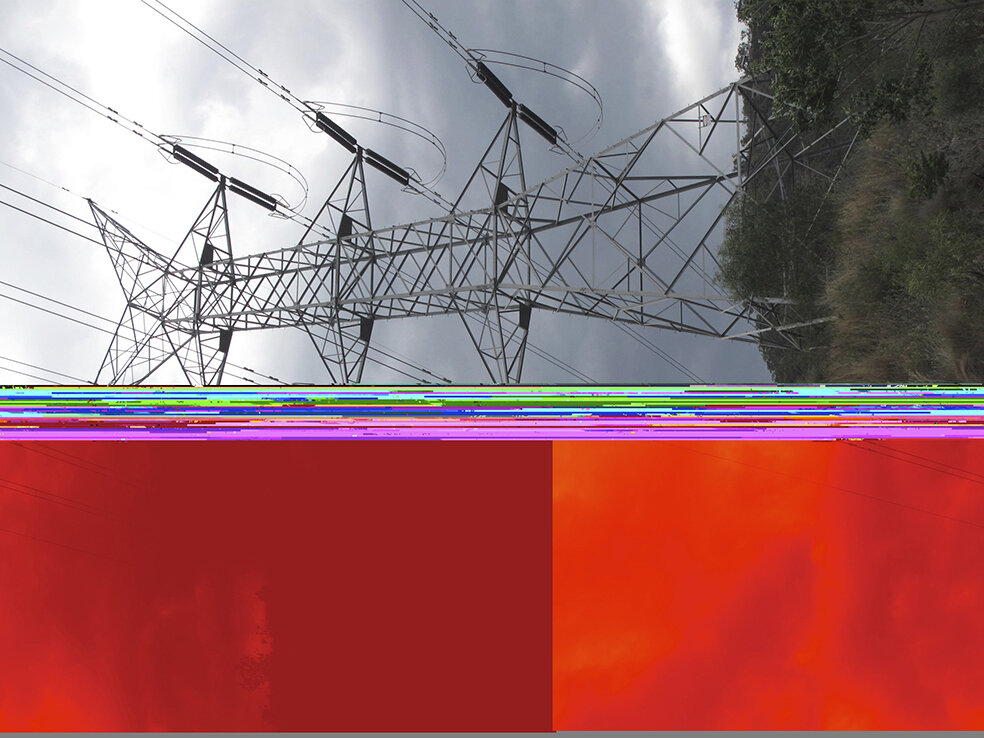
Denise Corrigan spoke to David Watson prior to the work’s online premiere in May 2021…
Why have you waited eight years to exhibit Jerrys Malfunction, which you shot in 2013?
I suspected that audiences back then (especially city folk, who barely knew where their power came from) had too little interest in or knowledge of fossil-fuel extraction (and its looming problematics) to really ‘get’ my images. I myself was only beginning to understand the terrifying science of global warming, and I remember artist friends at the time asking (about Leave it In the Ground, our 2013 anti-coal exhibition in Sydney) … why are you doing a show about coal? However, I’d always felt that my inadvertently-corroded images and their acidic, artificial palette usefully invoked the hidden currents, invisible stresses, violent interventions and defiled environments of coal country. Like coal itself (and all that its burning/export has afforded us over 150 years) they were multi-layered, at once ugly and dangerously attractive.
So I’ve chosen to release these images on the eve of a critical state by-election which will debate the future of coal, and this planet. Although the contest for the NSW seat of Upper Hunter on 22 May looks worryingly lop-sided (with all major parties unapologetically backing coal), the Greens and some enlightened independents will challenge our blind reliance on fossil fuels and call (at very least) for a moratorium on new coal mines (a position apparently supported by a majority of the electorate). How is it that we can endure lock-downs and border closures (i.e. act obediently together, respecting the science) to defeat COVID, yet ignore the irrefutable (and far more terrifying) science of catastrophic climate change? It is crystal clear that our coal communities must transition forthwith to sustainable, economically-viable industries. They should be given the opportunity and economic support to do so.
The camera malfunction has split the photographic frame. There often appear to be two or more different stories going on. Can you speak to this?
When big money‘s at stake we rarely ‘get the full picture’. The cancerous truth about tobacco was wilfully withheld for decades; the fossil-fuel industry has been similarly disinclined to dwell upon the catastrophic downsides directly attributable to its product (global warming/sea-level rise/extreme weather events/species extinction). The burning of fossil fuels also creates particulates which kill: the Hunter Valley knows all about poor air quality. But it also knows about generations of solid well-paid employment and hi-vis opportunity. So there will always be multiple, conflicted stories. I am hopeful that the spaces and contortions of my accidentally-abstracted documentary images mirror at least my own anxiety and a desire to put right that which is increasingly askew.
You have been involved in arts activism and environmental art-making for many years. Is it still possible to make a difference?
In the face of continuing government inaction and obfuscation it is becoming obvious to me that we are all potentially activists. Respect for indigenous custodianship and regard for country is enabling more and more Australians to recognise the folly of our colonial ‘extractivist’ mindset. We now lead the world in the uptake of rooftop solar, and our school climate strikers have inspired even Greta Thunberg. It’s important to keep chipping away, learning, sharing and protesting, to be engaged rather than to feel defeated and powerless, because, as I remember reading somewhere once, ‘history has generally proven that the activists were right’!
‘This is a deeply preventable catastrophe’ writes Ketan Joshi in his excellent recent piece (SMH 10/4/21) re what we the people can do…
Jerrys Malfunction
In the winter of 2013 we took the boys up to the Hunter Valley for the weekend. Researching an anti-coal exhibition, I'd made contact with Allen Barry at Retreat Thoroughbreds, a specialised horse-agistment operation up at Jerrys Plains north-west of Singleton, where we’d rented a cottage. There’d been protests in the area about plans to expand and open new mines, and the equine industry was mobilising as its pastures, water and air quality came under threat. I was interested to understand more about the collateral damage being wrought by big coal. With the valleys and surrounding hills in the grip of drought and particulate haze to the horizon, in blustery conditions we made recces to nearby villages, mines and look-outs, to gain a better idea of the local terrain. Next day we met Allen’s neighbour Ian Moore, the legally-blind farmer whose tooth-and-nail fight to hang onto his farm against NuCoaI had hit the national media.
Back home in Sydney with (I sensed) a swag of resonant photographs, I discovered to my horror that over that gritty, windy weekend my memory card had been corrupted, my digital files garishly eroded.
Yet somehow these ‘ruined’ images rang more truly.
Upper Hunter is one of NSW’s most marginal seats and the electorate with the highest proportion of mining jobs. The region is also known for its agricultural industry, including vineyards and horse studs.
Peter Hannam’s (SMH 18/4/21) overview is essential reading… https://www.smh.com.au/environment/sustainability/call-for-pantomime-of-coal-politics-to-end-in-upper-hunter-20210415-p57jj7.html
Advertisements placed in Art Guide Australia May/June 2021


